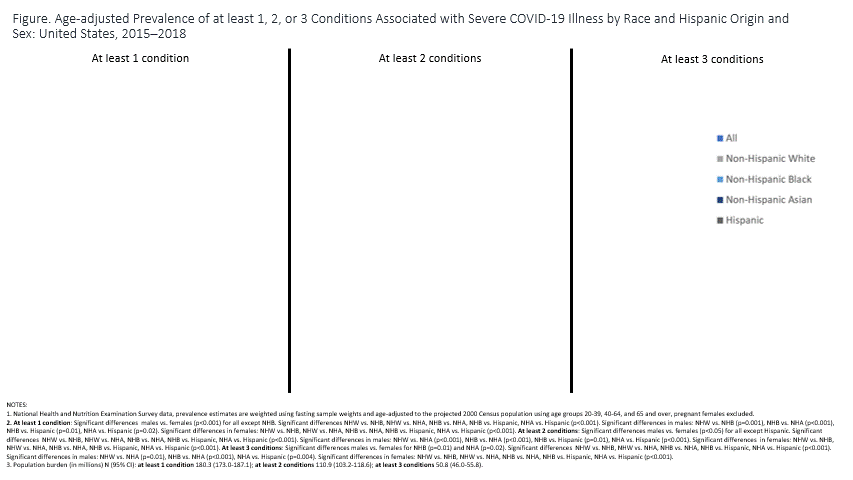Race and Hispanic-origin Disparities in Underlying Medical Conditions Associated With Severe COVID-19 Illness: U.S. Adults, 2015–2018
Posted on by A new NCHS report calculates the prevalence of selected conditions by race and Hispanic origin among U.S. adults (aged 20 and over) during 2015–2018.
A new NCHS report calculates the prevalence of selected conditions by race and Hispanic origin among U.S. adults (aged 20 and over) during 2015–2018.
Data were used from the National Health and Nutrition Examination Survey. Conditions included asthma, chronic obstructive pulmonary disease, and heart disease based on self-report; and obesity, severe obesity, diabetes, chronic kidney disease, smoking, and hypertension based on physical measurements
Findings:
- An estimated 180.3 million (76.2%) U.S. adults had at least one condition during 2015–2018.
- Approximately 86.4% of non-Hispanic black adults had at least one condition, 58.5% had at least two conditions, and 29% had at least three conditions; these prevalence estimates were significantly higher than among other race and Hispanic-origin groups.
- Compared with non-Hispanic white adults, Hispanic adults had higher rates of obesity and diabetes.
- Non-Hispanic Asian adults had lower rates of at least one condition, but higher rates of diabetes compared with non-Hispanic white adults.
- Non-Hispanic black women were more likely to have multiple conditions, obesity, severe obesity, diabetes, and hypertension compared with non-Hispanic white women.
- Non-Hispanic black men were more likely to have one or more conditions and hypertension compared with non-Hispanic white men.
- Hispanic men were more likely to have diabetes compared with non-Hispanic white men.
Posted on by
Page last reviewed: April 28, 2021
Page last updated: April 28, 2021
Content source:
CDC, National Center for Health Statistics

